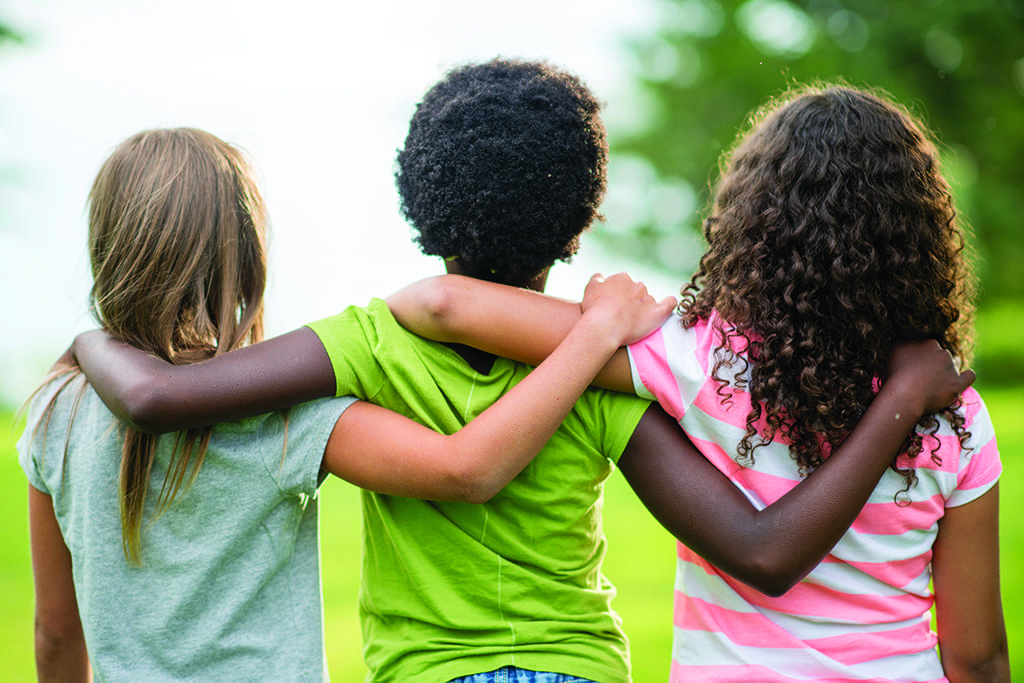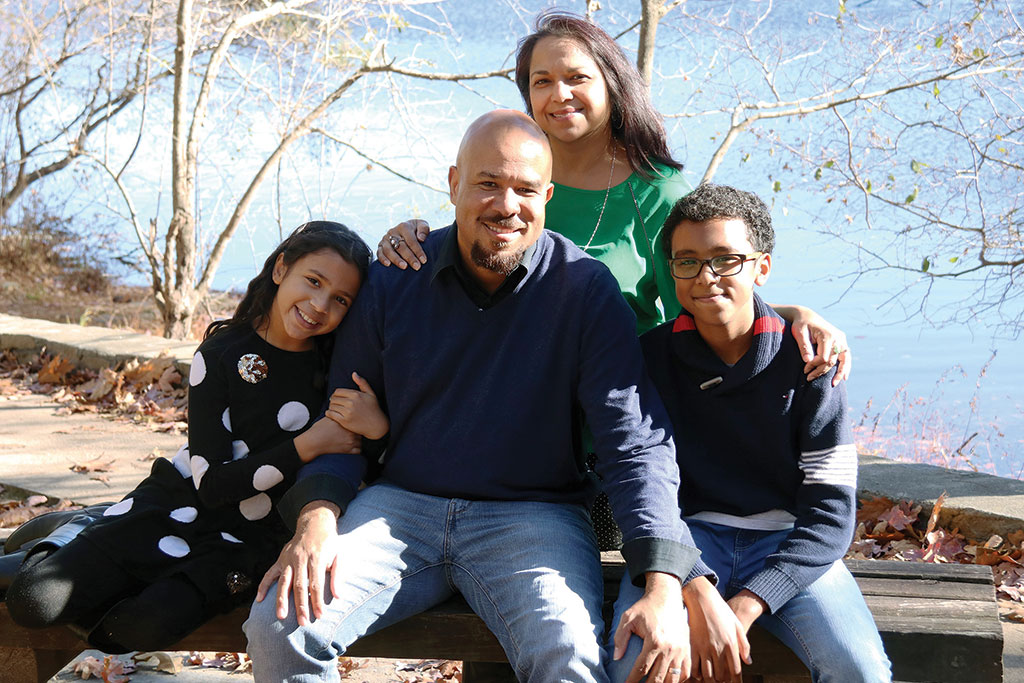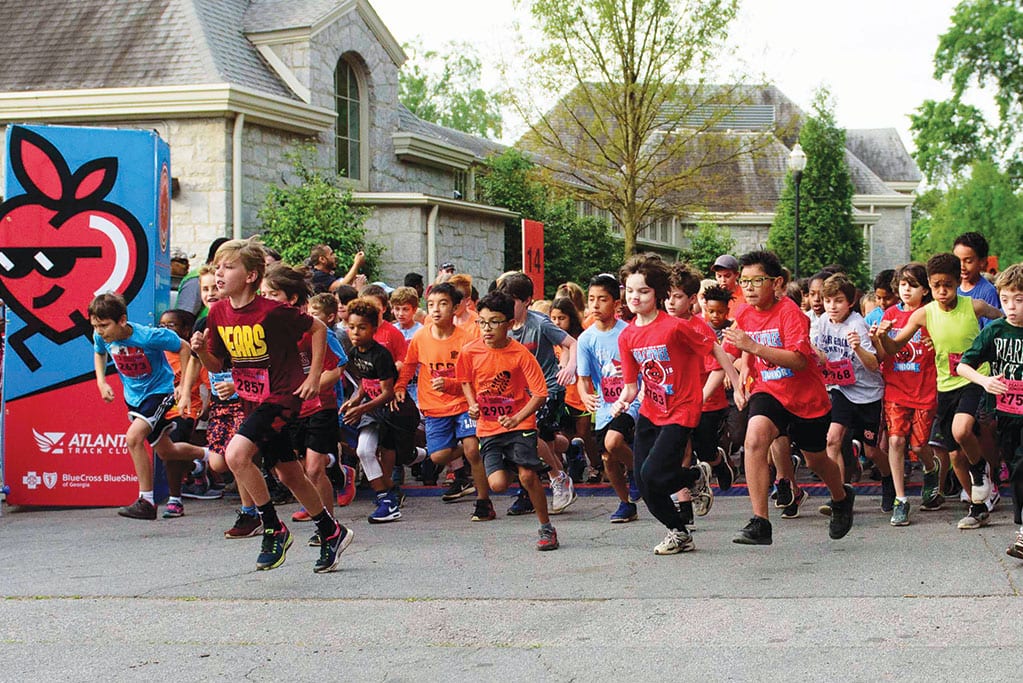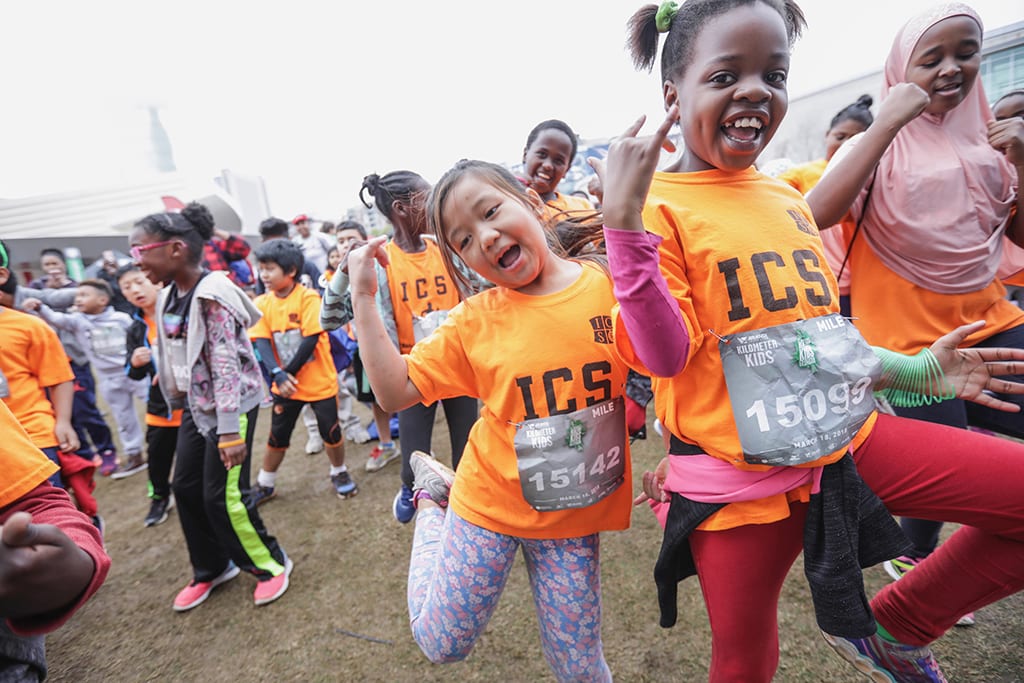Raising Race-Conscious Children: How to Get the Conversation Started

A conversation about racial differences is a difficult one for many parents. But children are not waiting around for adults to talk about these issues – they are ready to discuss these topics early, usually by preschool, and are doing so whether we realize it or not.
It may be difficult to find the appropriate time or place to bring up race. Keep an eye out for opportunities that pop up, like a TV show, a book, a song, or an event that touches on the topic. Or maybe your young child notices someone else has darker skin than they do.
One way to begin the conversation with young children is to introduce children’s books with diverse characters. Two recent favorites are “One of a Kind” by Chris Gorman and “Happy in Our Skin” by Fran Manushkin. These books provide opportunities for you to listen and learn about your child’s thoughts on racial differences, and to discuss how we are different and that’s what makes us special.
Because talking to our kids about race issues is such a challenging task, consider these ideas:
Table of Contents
Examine your own biases first.
Before you begin to talk to your children, take some time to look inside yourself and acknowledge your own experiences, biases or privileges that may influence how you address these issues. Don’t be afraid to share your own struggles about these topics with your kids. You can tell them that you are not an expert and want to work together with them to learn more. Consider taking an online test about bias created by Harvard experts.
Be a good role model.
Our children are watching and listening to us. Dr. Beverly Tatum, psychologist, educator, author and past president of Spelman College, suggests that the best way to reduce children’s prejudices is to model an inclusive home, demonstrating that we have friends of all backgrounds. She explains that “parents who have learned to lead multicultural lives, connecting with people different from themselves, are more likely to have children who develop those important life skills at an early age.”
Tell them the truth.
Racism is a complicated issue that tends to be over-simplified to the detriment of children’s education. Be sure to use correct definitions and tell them about historical events like slavery and the Civil Rights Movement. Turn to expert resources, like Teaching Tolerance that will walk you through effective ways to talk to your children about these issues.
Avoid generalizations and stereotypes.
Choose your words carefully. It’s important for children to remain open-minded and to understand that individuals are unique and have varying experiences and views.
Celebrate the positives.
Although there are abhorrent stories in our history of race relations in this country, it’s important to also focus on some of the heroes who fought for their freedom or continue to fight for equality today.
Encourage them to express their emotions.
Learning about racism can be very distressing. Let your children reflect on how it makes them feel. Their emotions can range from anger, shock, frustration, sadness, hopelessness, and fear. Then ask them to look for ways to transform those negative emotions into positives, like hope and activism.
Link history to present time.
An important reason to study history is to ensure that it does not repeat itself. Take time to draw links between events from the past with current affairs. Explain to your children that we are still fighting for equality for all.
– Sandi Schwartz






